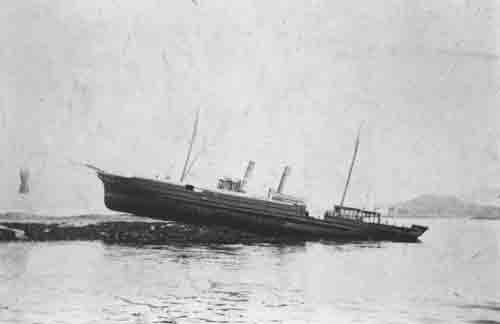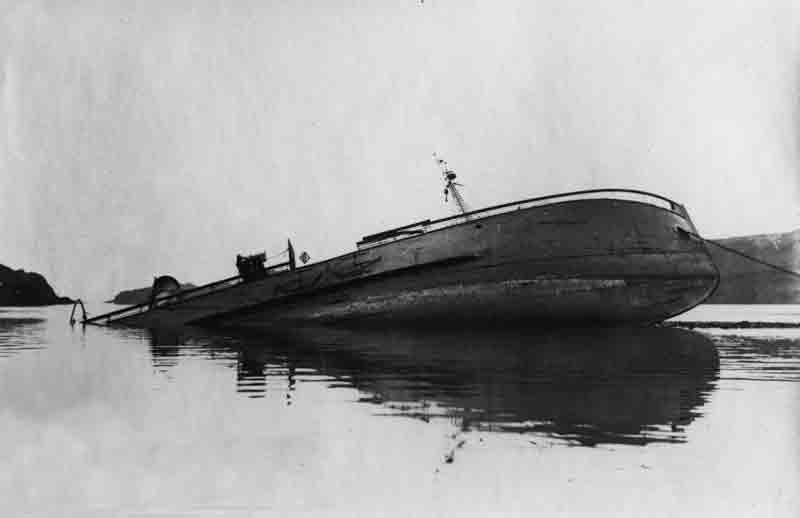The steel UE-1 class mine laying submarine U-74 was built at the Kaiserliche Werft yard in Danzig and launched on 10th August 1915. The UE class comprised 10 boats, U-71 to U-80. The U-74 measured 184.7′ x 19.3′ x 15.8′ and weighed 745 surface displacement tons and 829 submerged displacement tons. She was powered by 2 x 6 cylinder 450 hp diesel engines giving her and surface speed of 11 knots and a 600 KW electric motor providing an underwater speed of 8 knots. She was equipped with 2 x 50 cm torpedo tubes (4 torpedoes), 1 x 88 mm deck gun mounted aft of the conning tower and a payload of 38 mines.
The mine laying submarines of the German Navy primarily relied on stealth for protection as the torpedo tubes and small number of torpedoes carried and deck gun provided little attack or defence capability. The short career of U-74 involved only two sorties. On the first sortie in April 1916 she laid mines in the Forth of Forth and one of these mines sank the cargo ship Sabbia on 20th April south east of May Island.
Her second sortie in July 1916 saw her return to the same area with orders to lay a minefield off Rosyth. She was commanded by Kapitanlieutnant Erwin Weisbach and had a crew of thirty three men under his command. Reports of her loss are, understandably confused as she was to disappear with the loss of all hands. Until fairly recently she was reported lost off Peterhead when a group of four armed trawlers reported firing at, hitting and sinking a U-boat with the trawler Kimberly firing the final shot. Presumably this report was a case of mistaken identity and in fact a different U-boat was sunk in this instance.
The wreck is located 6.3km NNE of Dunbar Harbour in position 56° 03.701’N, 02° 29.725’W. After years of erroneous identification of the wreck (originally suspected to be the dredger Cyclops which lies close by) it was identified as a UE-1 class mine laying submarine in 1993 and finally confirmed as U-74 in 2008 when the serial number of the deck gun on the wreck was traced to the U-74 and the mystery finally solved.
Of course, with the lack of any witnesses to the loss the details of the sinking are uncertain. However, the lack of any reports from allied vessels of an attack on a U-boat of this design in the vicinity and the suspected damage to the stern section of the wreck have led to speculation she was rammed or, perhaps became the victim of an accident when laying her mines causing a rapid flood and loss of the vessel and all the men aboard. Visible damage to her forward periscope which appears broken and the stub bent aft towards the other scope would suggest some sort of impact damage. None of the 34 crew were ever found and were assumed to have perished with their ship.
The wreck lies upright in 39 -40 metres oriented 010°/190° with bow to north. The hull appears to be intact from bow to the small deck gun located aft of the conning tower. Here the sloping hull disappears below seabed level and may continue into the mud or could have been cut or blown off and lie close by. The conning tower and main periscope rise around 4 metres above sea bed, and in the forward face of the conning tower a couple of small glass ports are visible with small wipers. The bulbous profile of the bow is still intact but is narrow when viewed head on, both hydroplanes are in position. The framing for the spare torpedo housing on top of the hull was visible in 2001 but may have degraded over the years. A hatch pod is visible forward of the conning tower, and the tower also has a closed hatch on top.































